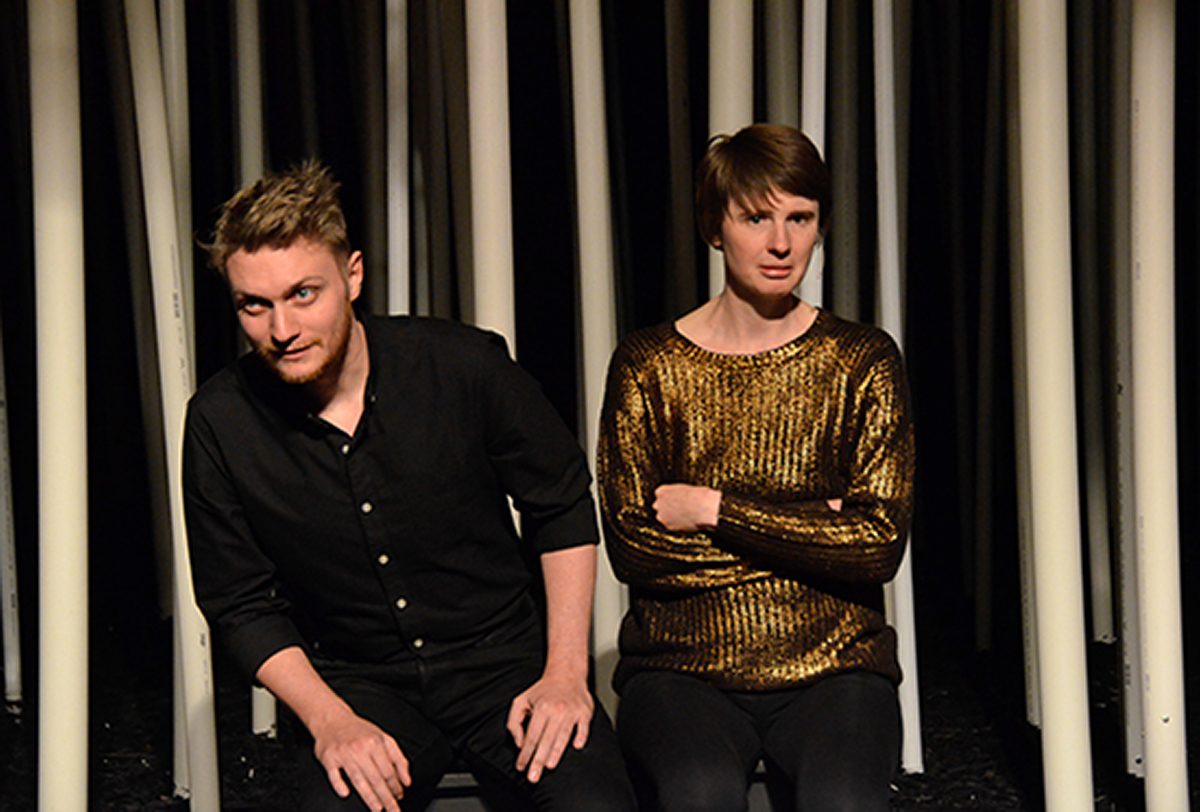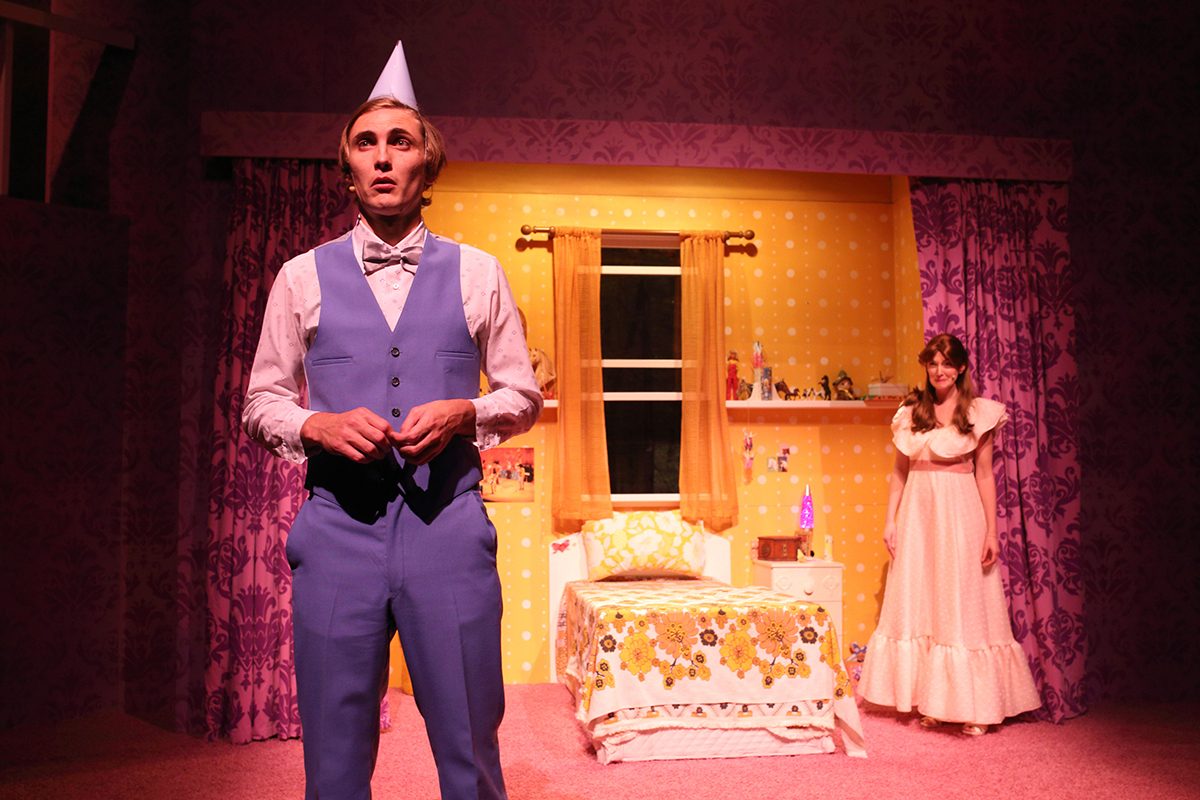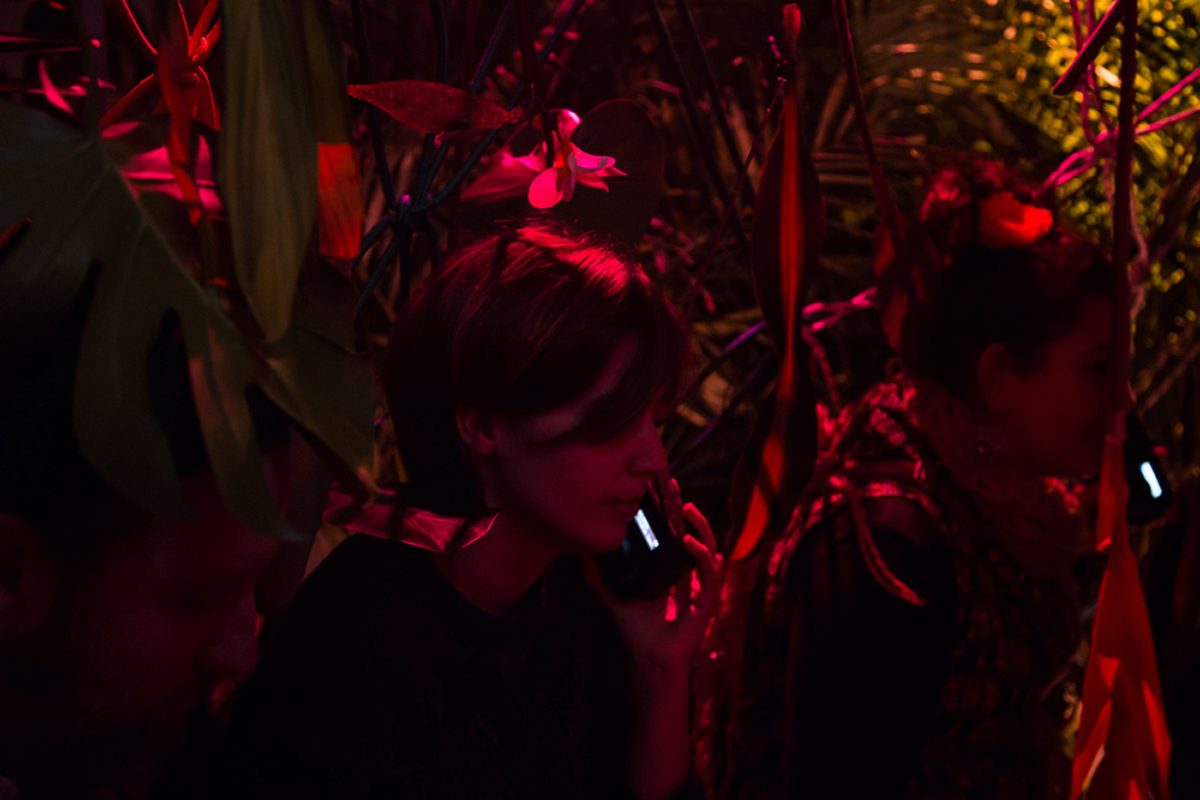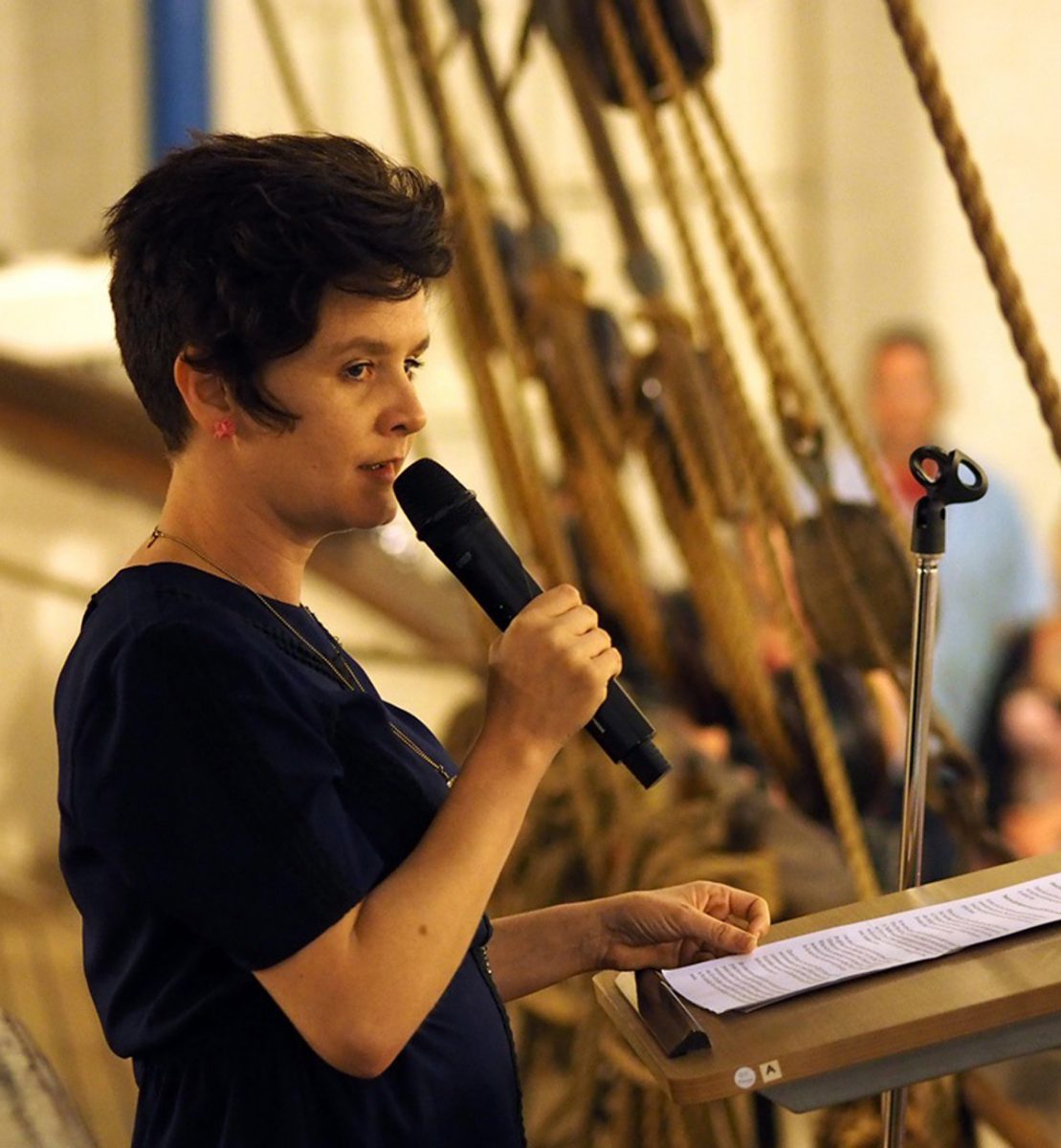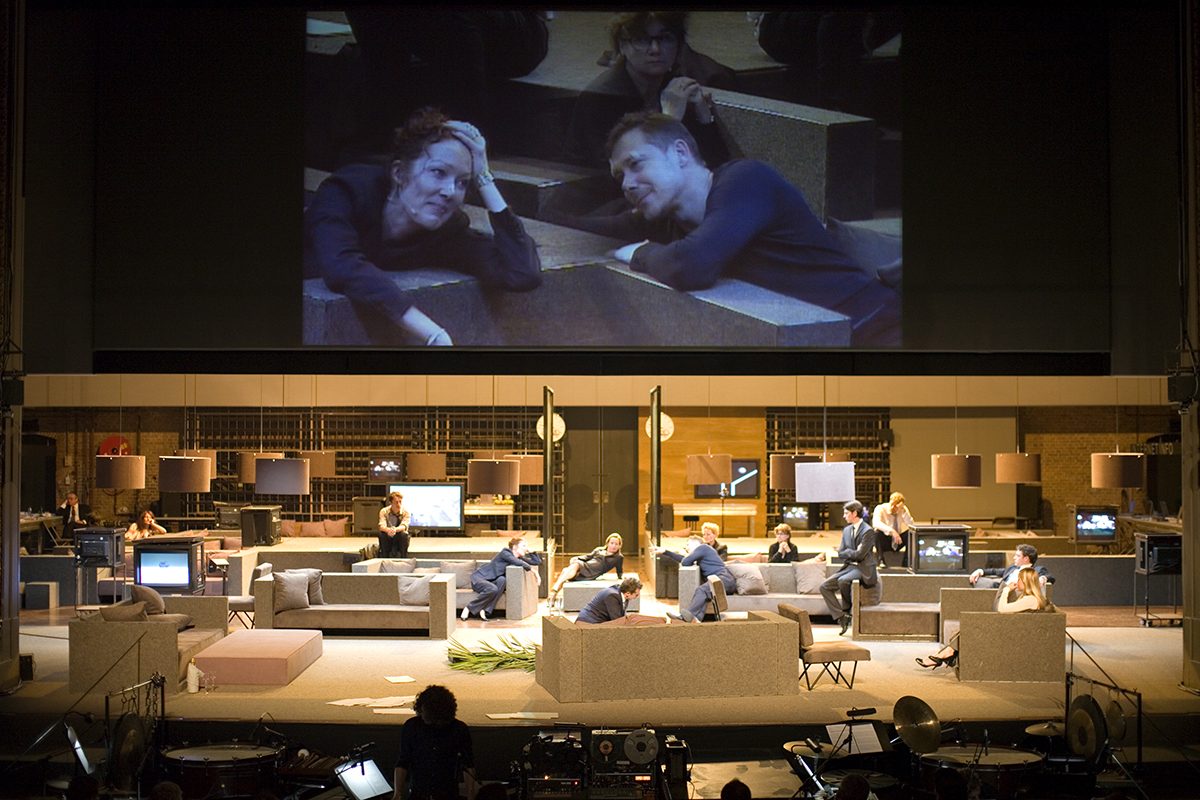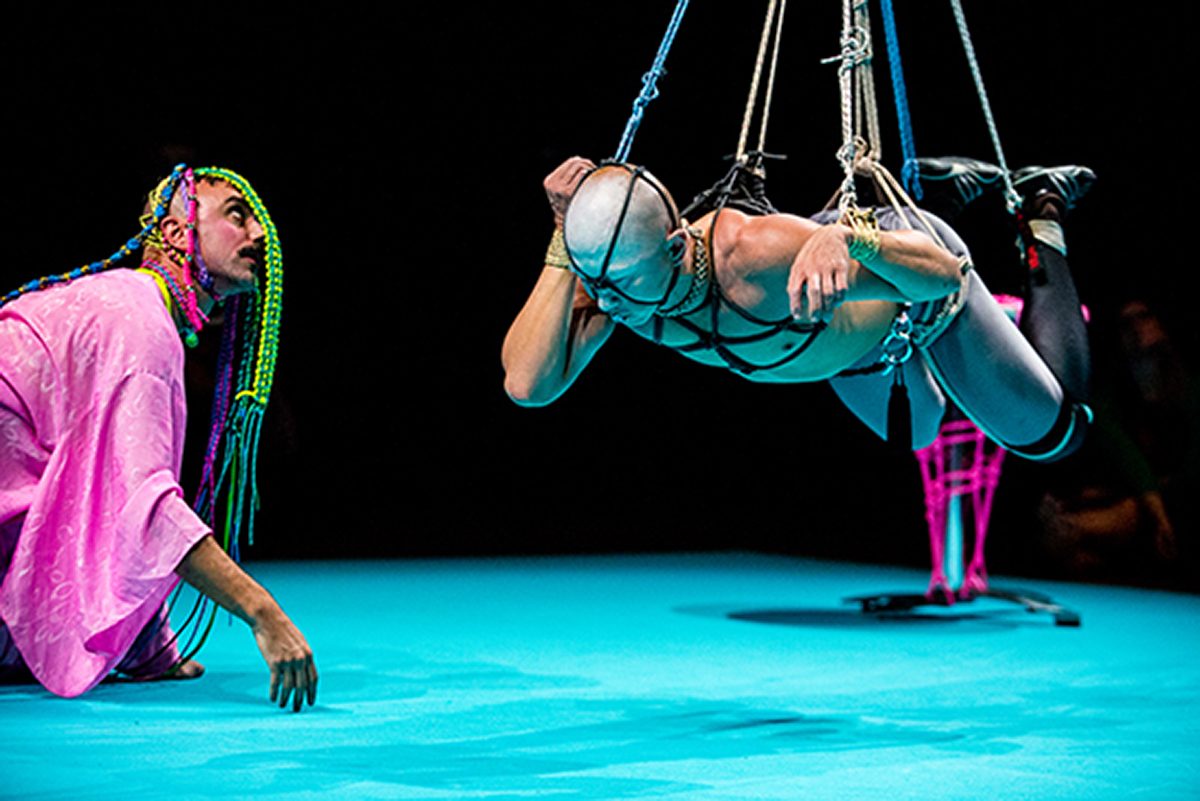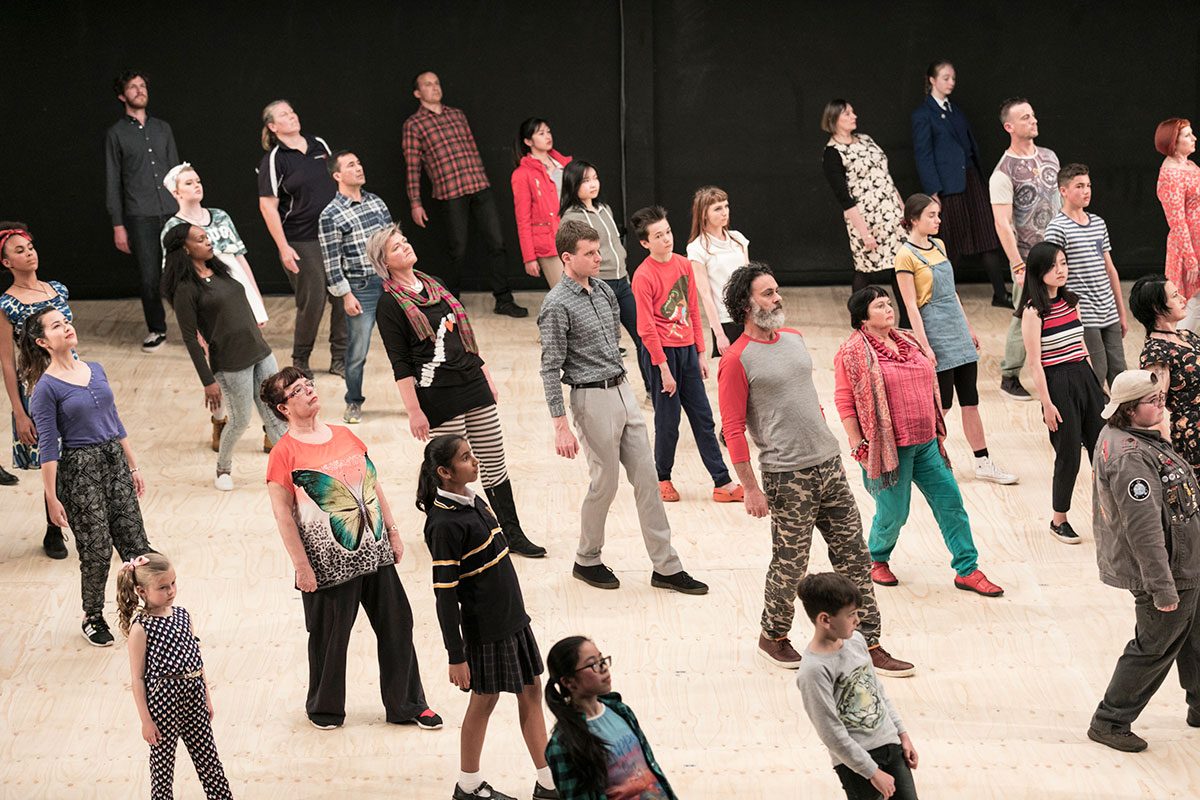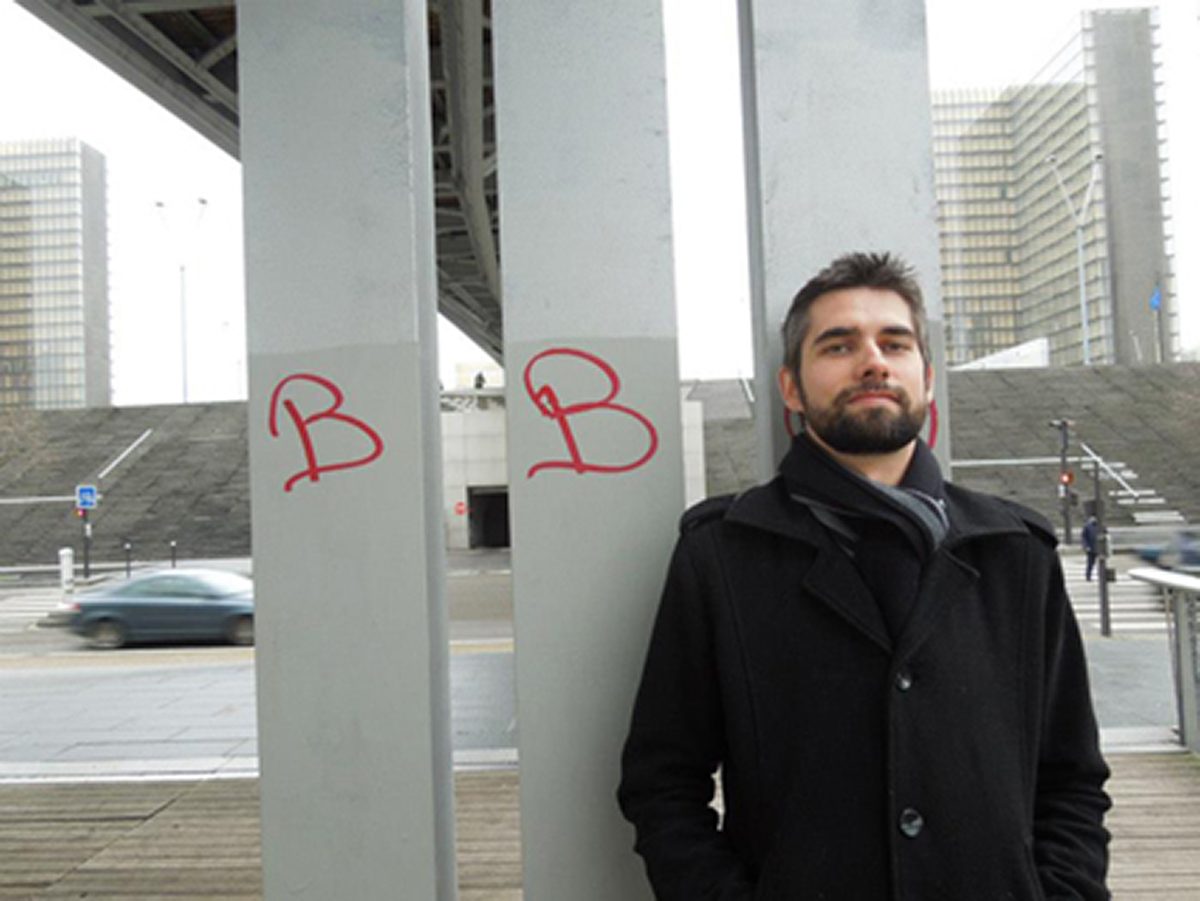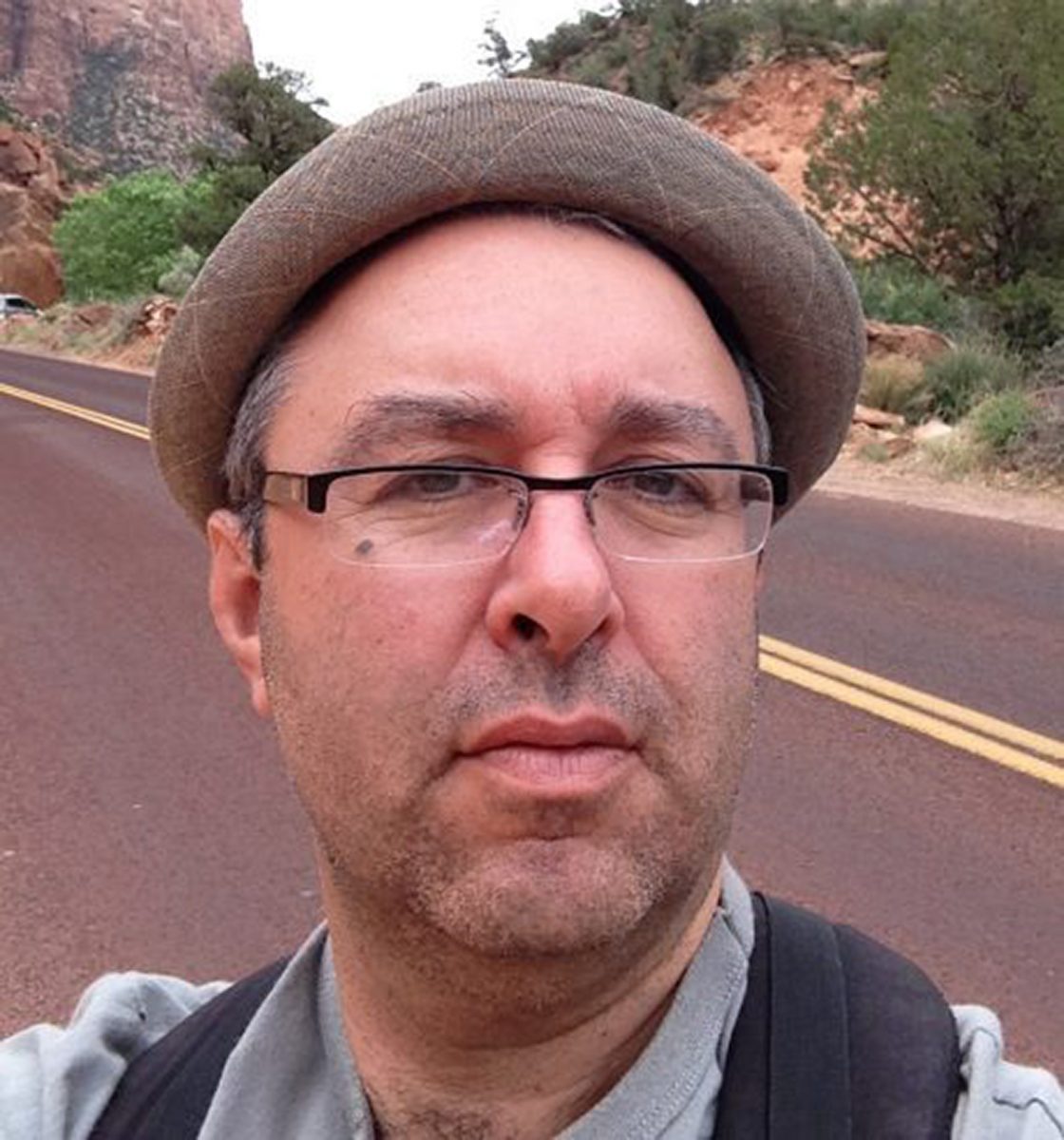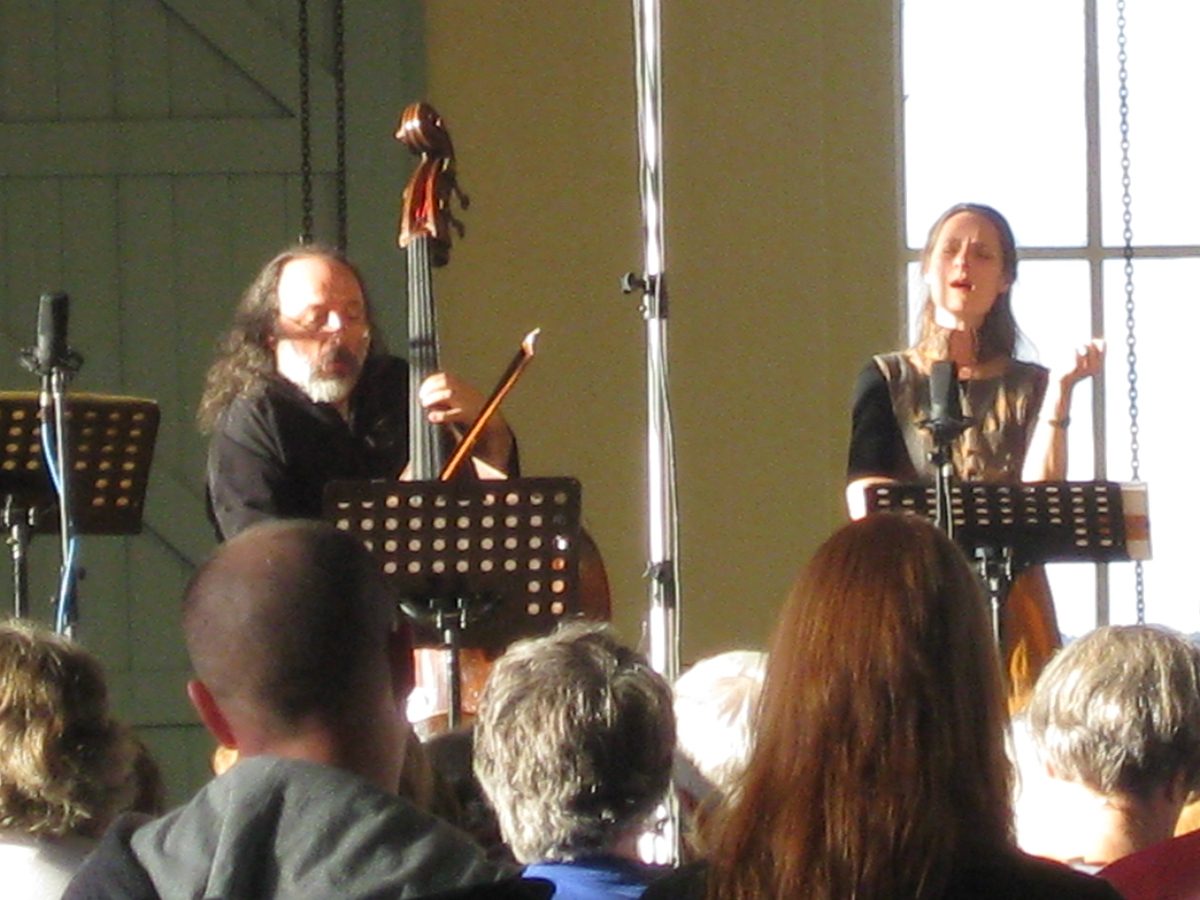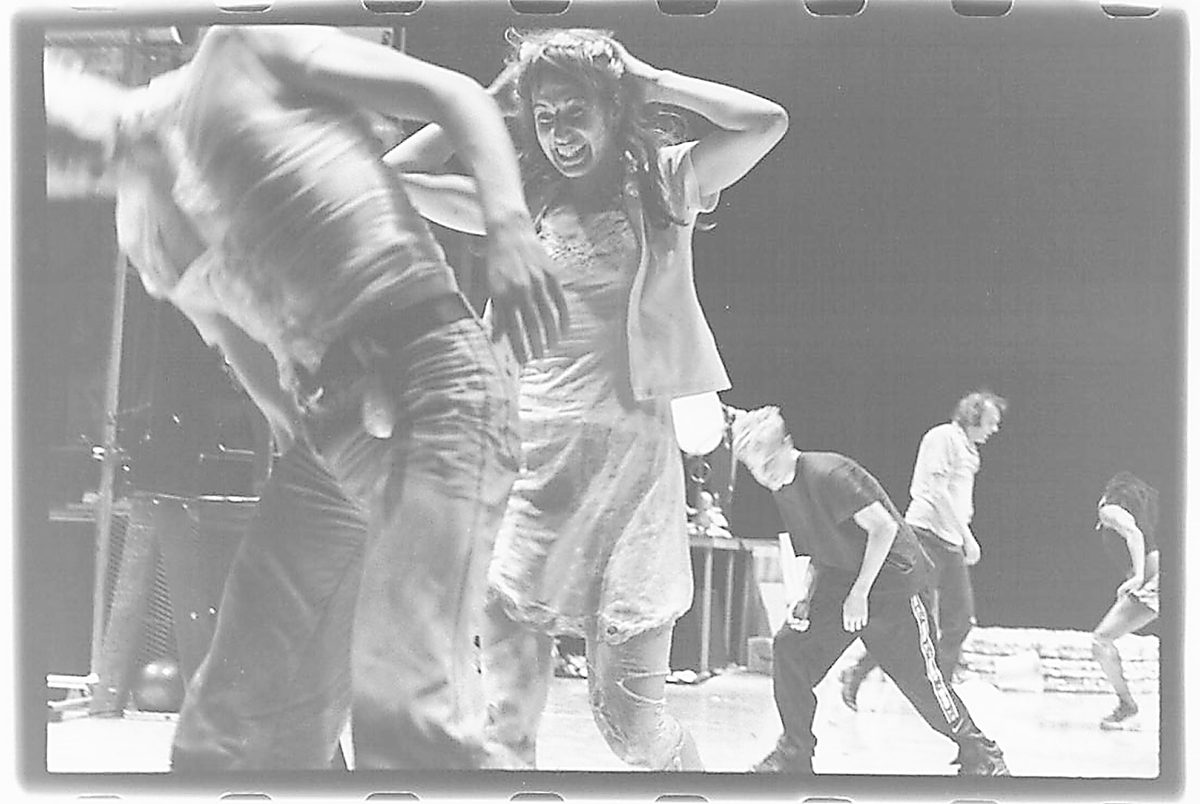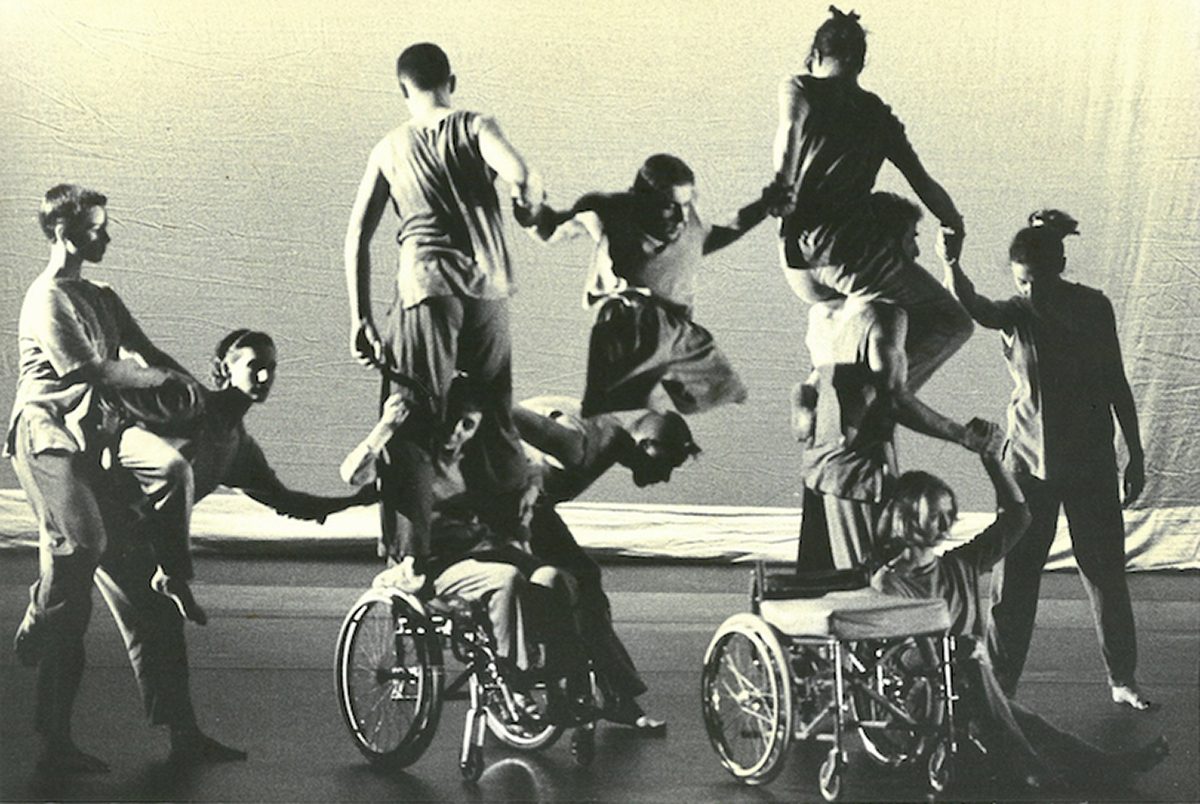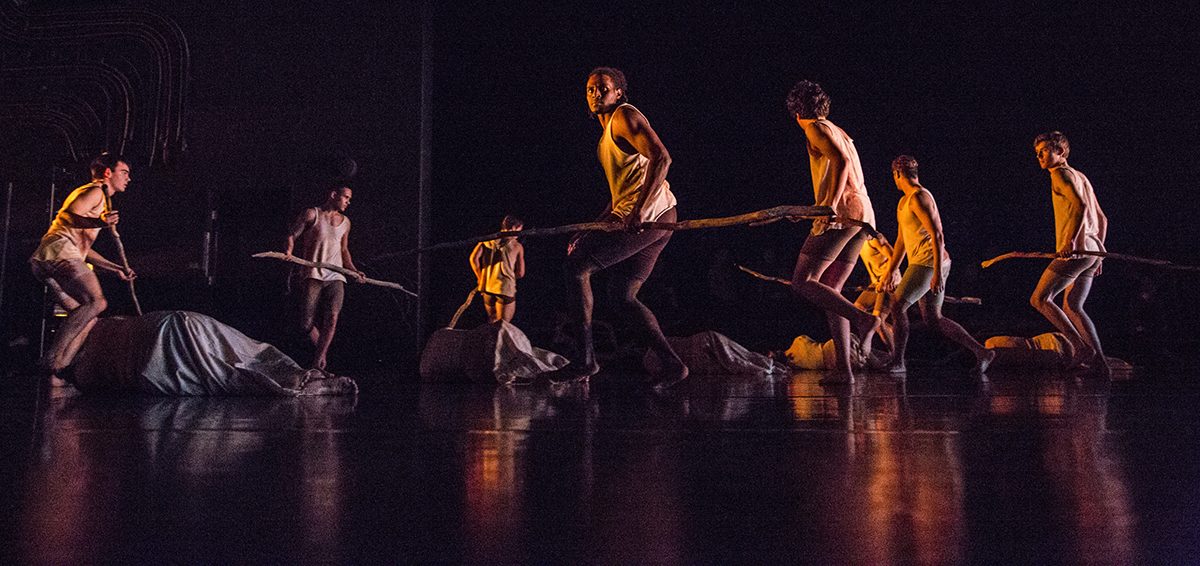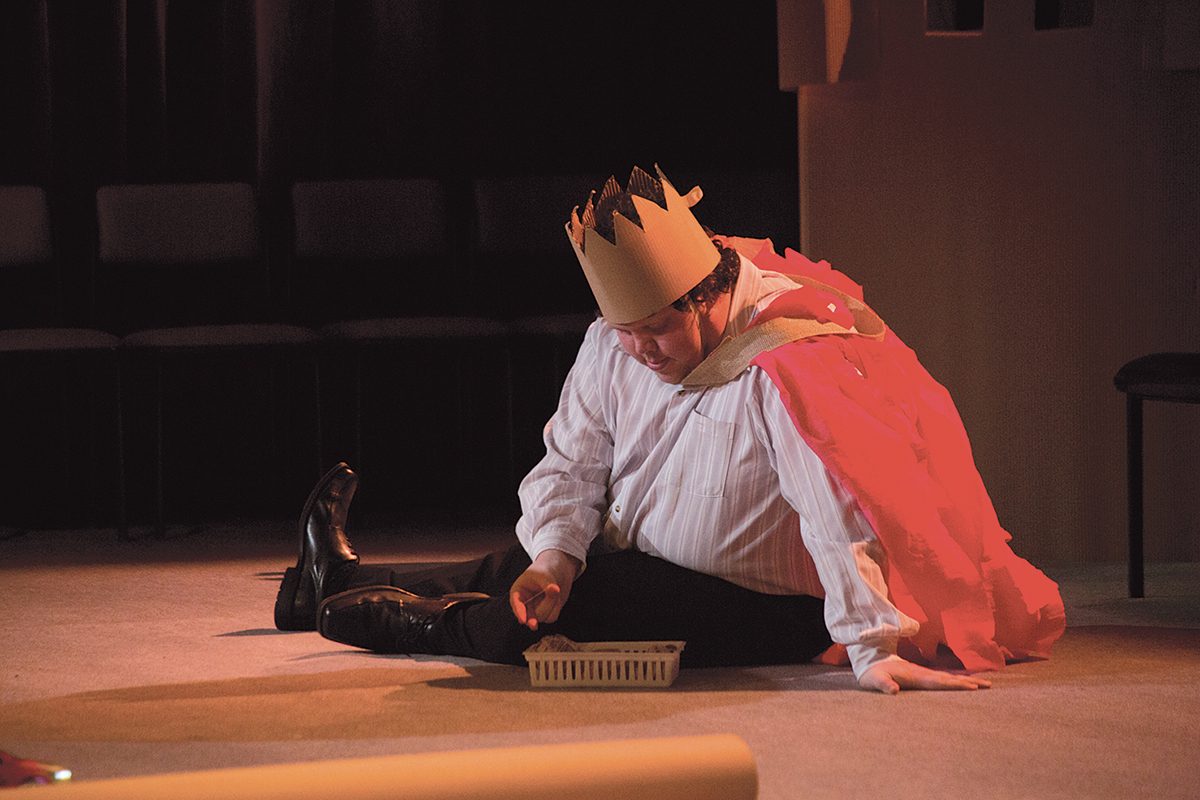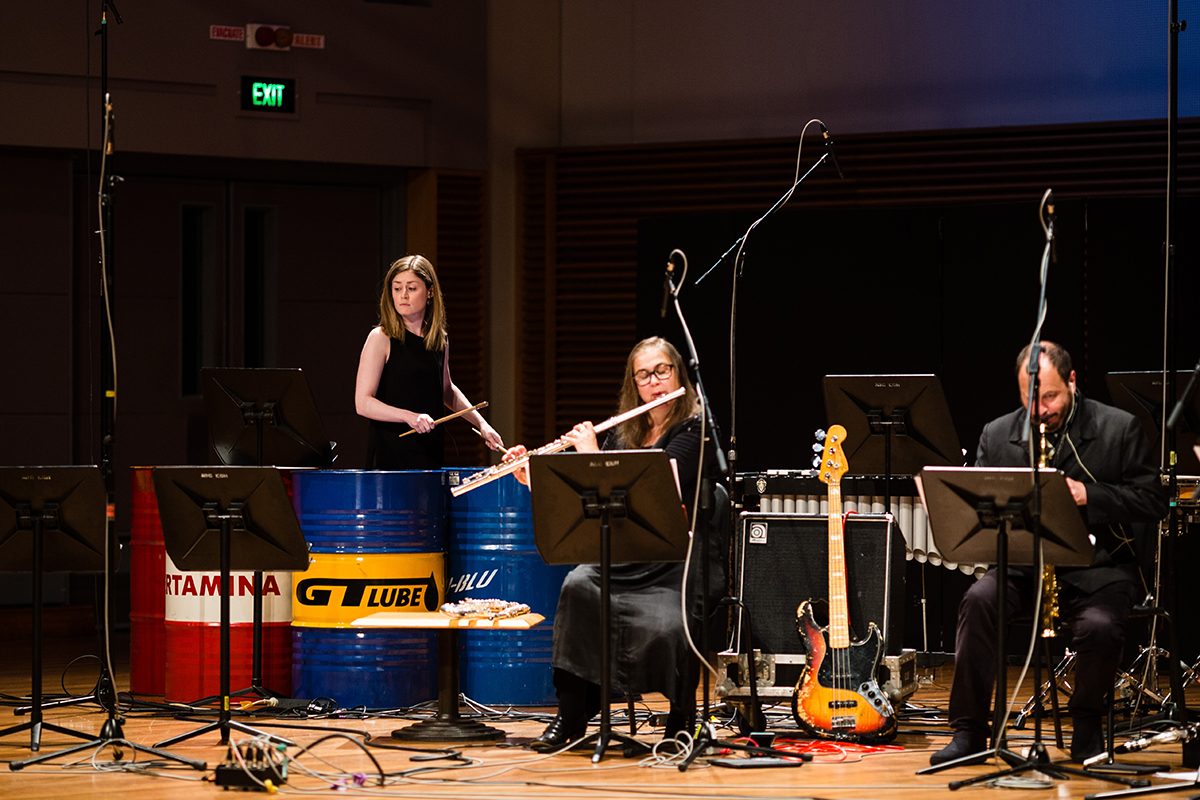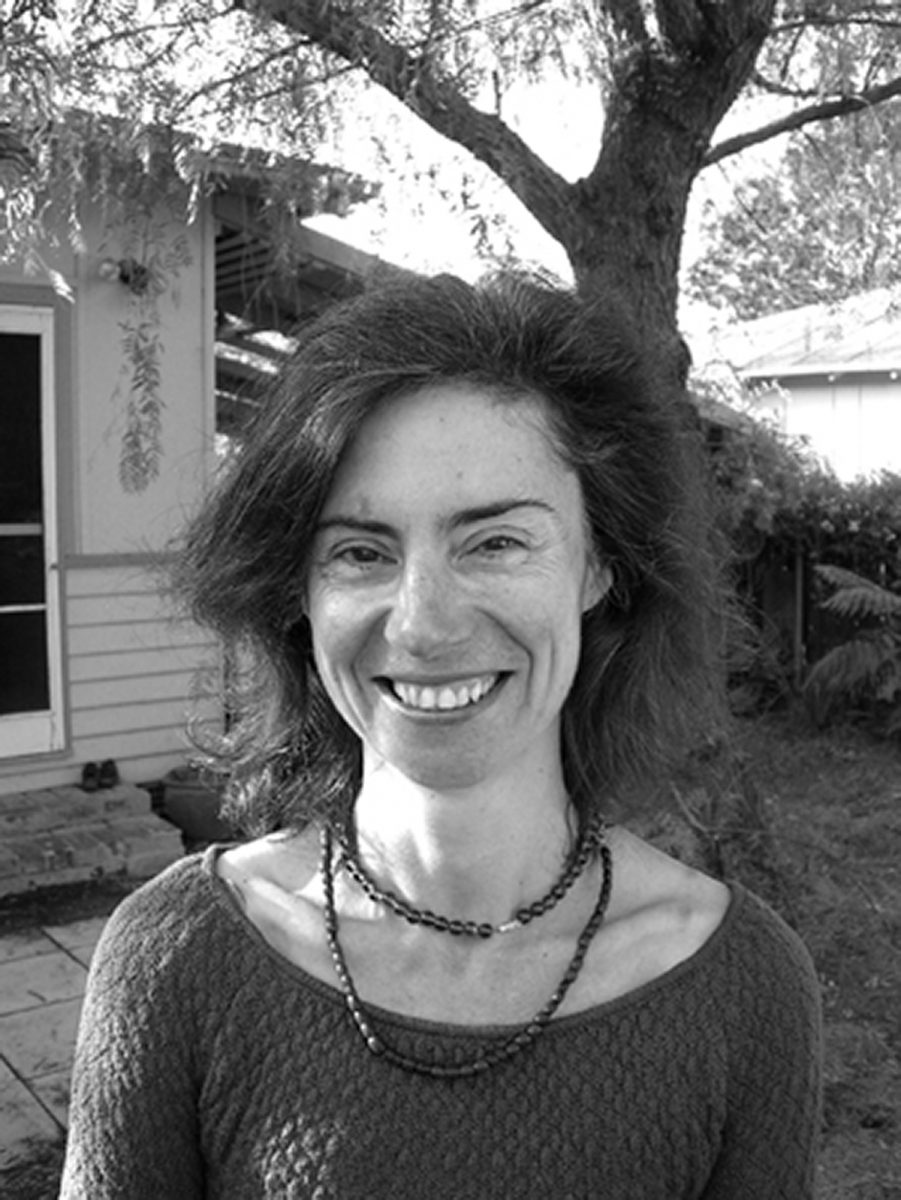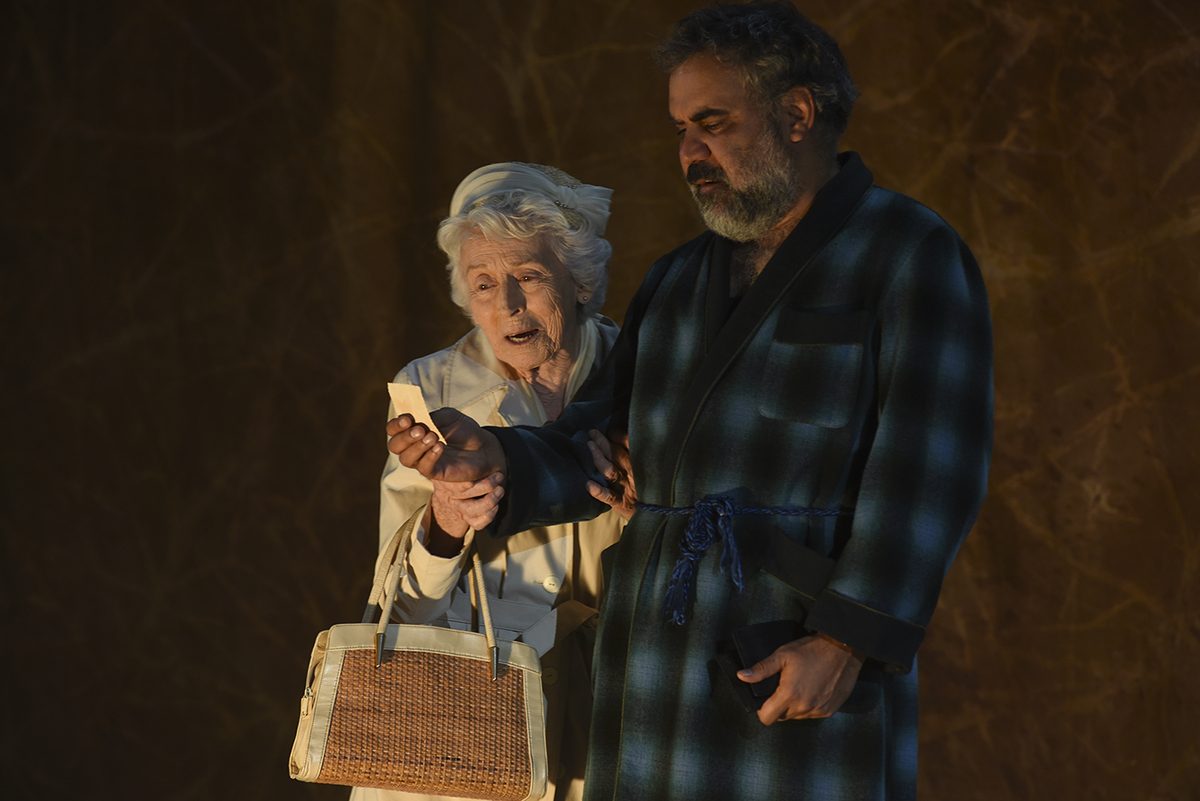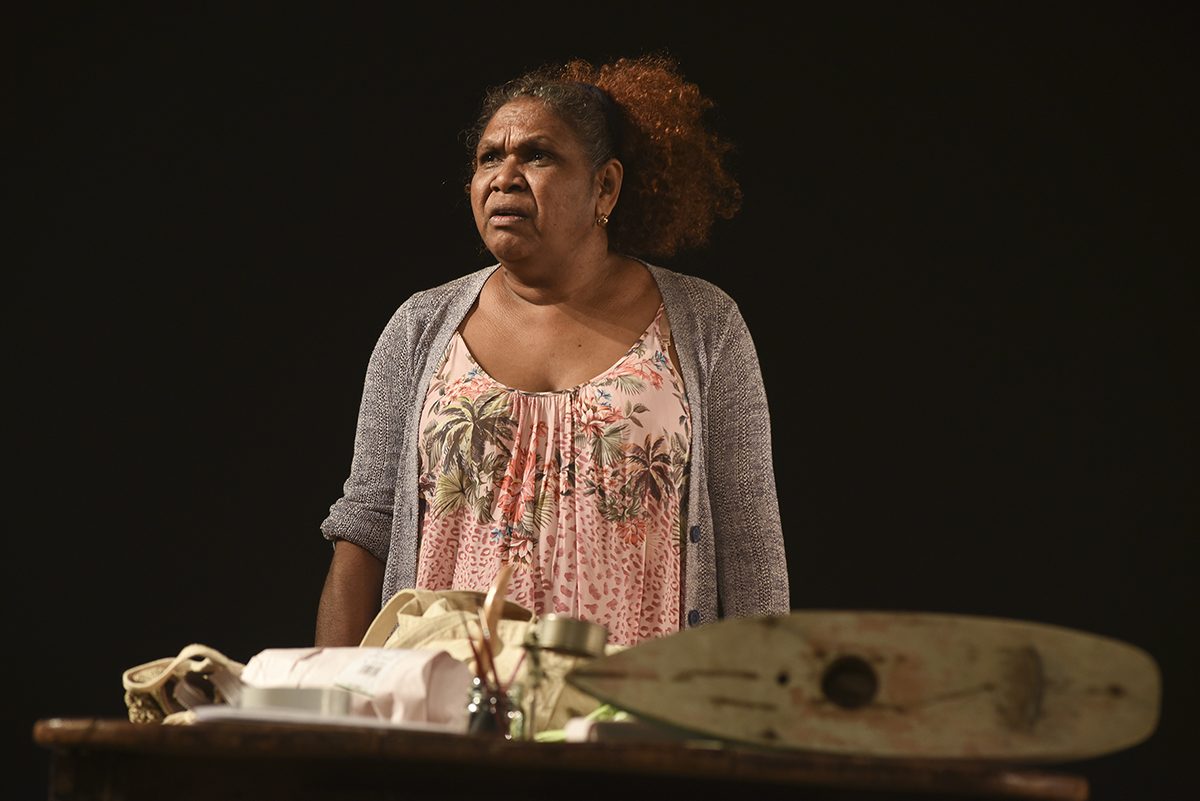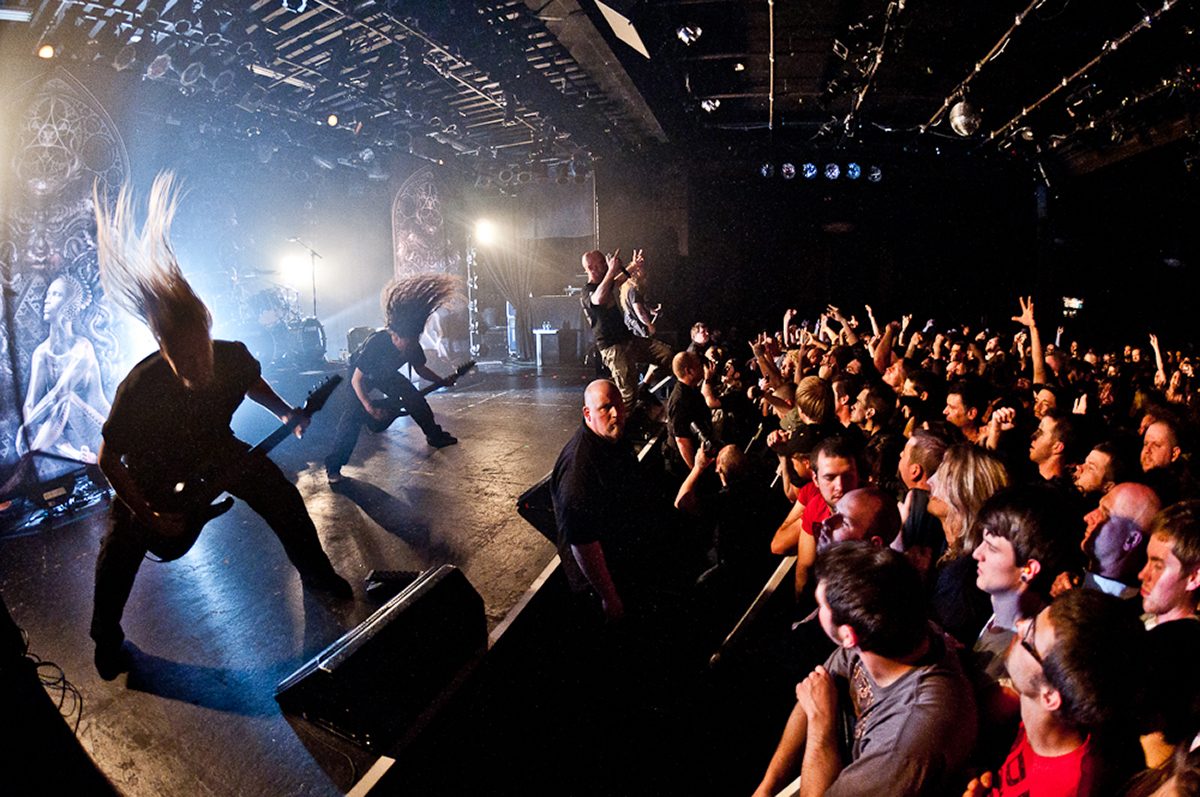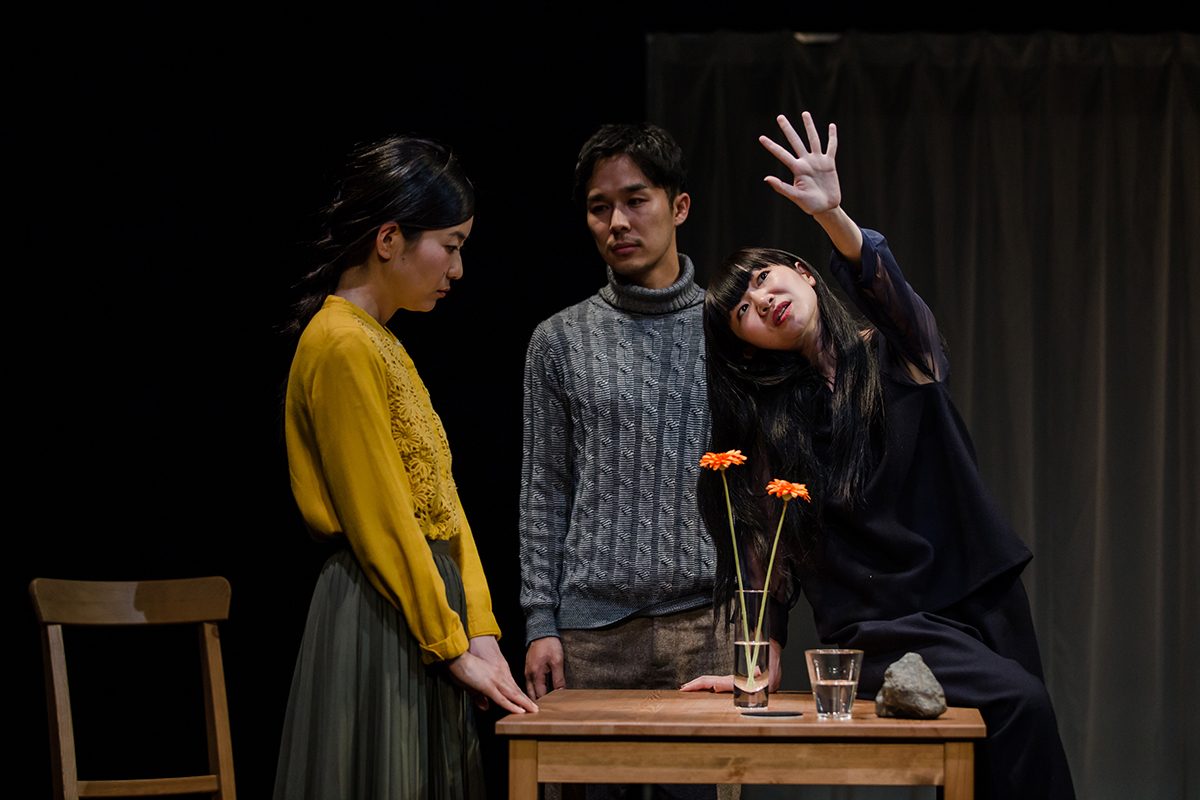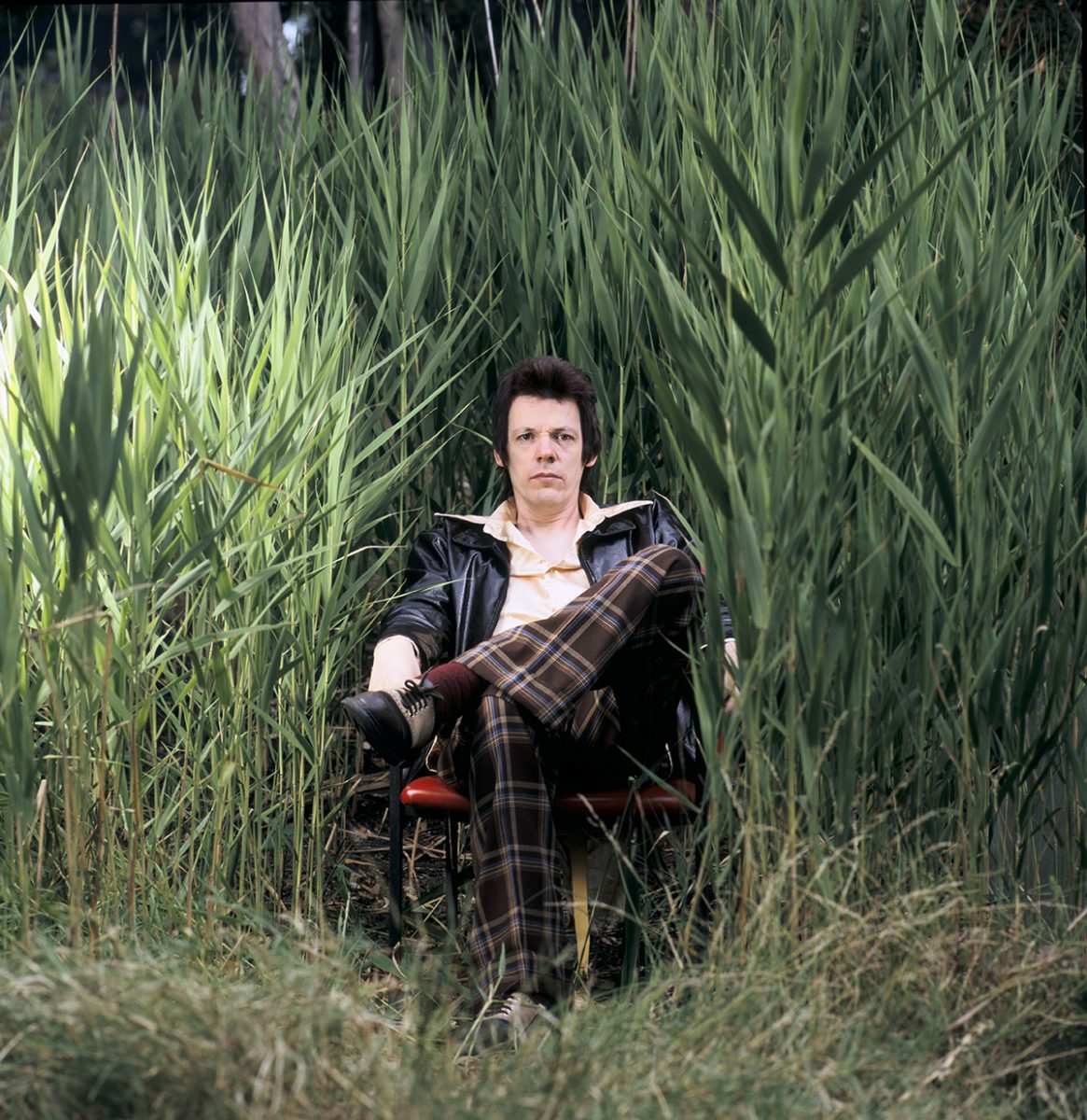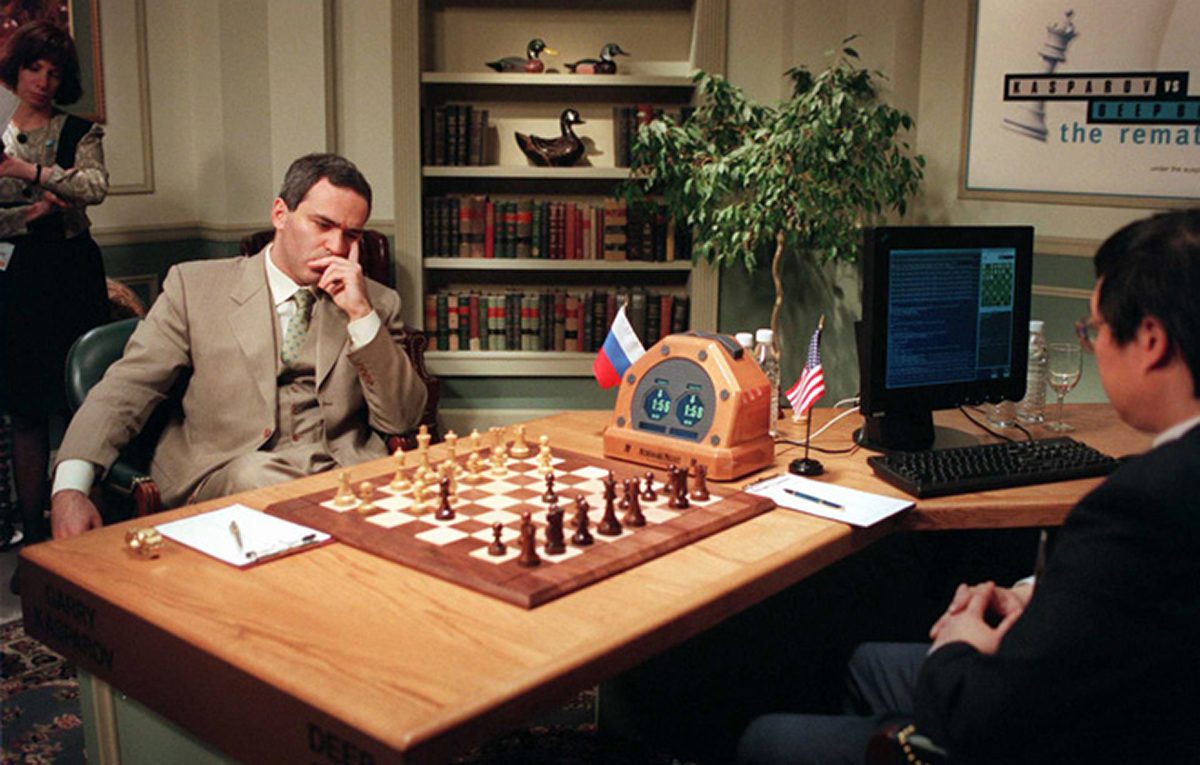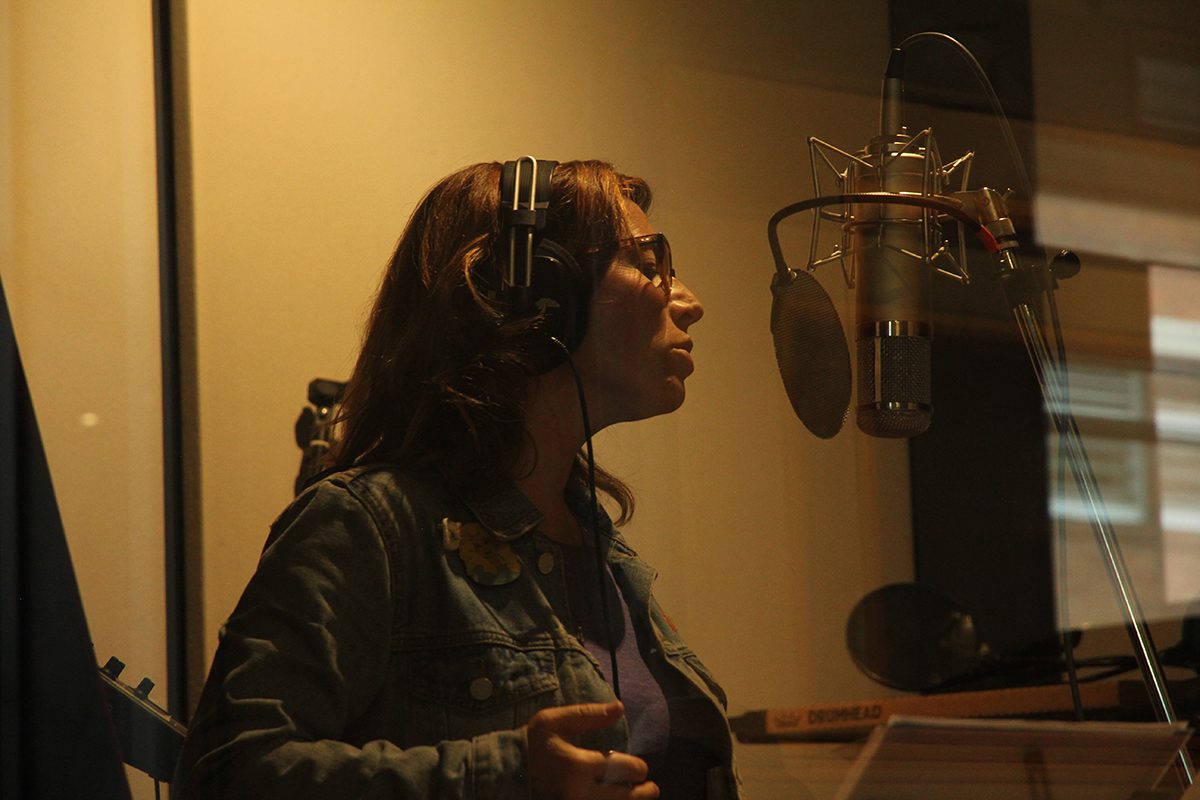August 2018
RealTime will take performative shape on 21 October. Titled RealTime in real time and part of the just launched 2018 Performance Space Liveworks Festival of Experimental Art program, it’s a five-hour open conversation focusing on a quarter of a century of extraordinary change in the arts — for artists and audiences and not least reviewers. Writers from around Australia will gather with local reviewers, artists, RealTime readers and performers to map out where we’ve been and might be going. In this edition, Ben Brooker and Zsuzsanna Soboslay (along with Chris Reid, Philip Brophy, Virginia Baxter and Katerina Sakkas in recent editions) provide preludes to RealTime in real time. Ben reflects on the works that mattered in his years with RealTime and the negatives that continue to limit bottom-up arts development in South Australia and which are met by artists with resilience and a commitment to nurturance. Zsuzsanna recalls from her decades of writing for RealTime, overseas and around Australia, pivotal experiences that are telling about the complexities of a writer’s responsiveness to art. We hope you’ll join us for RealTime in real time and will tell you more about it in our next edition. Good reading and recollecting! Keith & Virginia
–
Top image credit: Jeremy Broom, Catalogue of Dreams, Urban Theatre Projects, photo Fred Harden
In her much-viewed 2009 TED Talk, Nigerian writer Chimamanda Ngozi Adichie spoke of “the danger of a single story.” How then to sum up a time or a place to do justice to a culture’s multiplicities without resort to the constricting cliché, the sweeping overview that brushes them out of sight? Adelaide is a small city but that makes the summariser’s task no easier. The endless push and pull between progress and regression, largesse and meanness — evident anywhere the arts are a political plaything — is, if anything, more keenly felt in a city of this size, more resistant to abbreviation.
Braving institutionalised disadvantage
The story of the arts in Adelaide has really always been two stories, a double helix of conservatism and innovation, retreat and growth. Plans are revealed for a new contemporary art gallery while the Contemporary Art Centre of South Australia (established 1942) and the Australian Experimental Art Foundation (est 1974) are forced to amalgamate, having lost operational Australia Council funding, along with key small to medium companies Brink, Slingsby and Vitalstatistix, in then Arts Minister George Brandis’ cuts in 2015 with which he funded his Excellence in the Arts (subsequently Catalyst) program. Independent theatre companies come and go, initiatives flare and then burn out. Artists take flight to Melbourne, chasing a slice of that city’s comparatively munificent arts funding arrangements, or else Berlin, or Athens.
Adelaide is an amnesiac, often parochial city in thrall, largely, not to culture but to festivals (yet another one, Australian Dance Theatre’s Adelaide Dance Festival, was added this year), and where four weeks of intense cultural activity across February and March can feel offset by 11 months of small-town torpor. Millions of dollars pour into capital investments and major institutions — Her Majesty’s Theatre, Adelaide Contemporary Gallery, Adelaide Festival and Adelaide Festival Centre — while generators and incubators of new work, starved of funds, scrabble for the few spaces that are available to them. Vocational education teeters on the edge, its creative art courses written off by the Federal Government as “lifestyle choices” unworthy of public subsidy (the current intake to the Advanced Diploma of Arts [Acting] at the Adelaide College of the Arts, which I wrote about in my interview with Head of Acting Terence Crawford in 2016, numbers a mere six students). It’s widely expected that this year’s State Budget, to be delivered in September by South Australia’s first conservative government in 16 years, will see a further depleting of the already meagre arts funding pool.
Emergence & renewal
And yet, throughout the period 2011–2017 in which I wrote for RealTime, artists emerged, consolidated and renewed, all the while pressing at the boundaries of form and theme. Enterprising small players abounded: Emma Beech, Tessa Leong, Gravity and Other Myths, Larissa McGowan, Jason Sweeney, Stone/Castro and Restless Dance Theatre, which, under PJ Rose’s transformative Artistic Directorship (1997-2016), was a model of growth and engagement in one of the sectors most strained by funding cuts. Windmill, with its distinctively design-focused brand of children’s theatre under Artistic Director Rosemary Myers, Australian Dance Theatre (now finally given its own venue after years of limited funding ‘shared’ with Leigh Warren and Dancers and others) and the State Theatre Company’s support of local writers — chief among them Phillip Kavanagh, Emily Steel and Elena Carapetis — produced similarly energising work.
Meanwhile, arts organisations forged new partnerships, found unexpected camaraderie in the face of loss. As I wrote in RT in June 2017, “…it strikes me too that one of the few good things to have come out of the funding crisis has been a refreshed sense of industry solidarity, of people and organisations reaching out across artistic divides — perhaps not as wide as we had first thought — in ways that have not, or only fitfully, happened before.” One such organisation, whose Artistic Director Emma Webb I interviewed for that piece, is Vitalstatistix, which – along with the Adelaide Festival Centre’s inSPACE program — has proved a necessary incubator of contemporary, multi-disciplinary art of national as well as local significance.
Vitalstatistix: exemplary incubator
The list of artists Vitalstatistix has worked with in the past six years, as both a presentation and development partner, speaks to the company’s animating commitment to furthering experimental modes of performance and engagement. Above all, Adhocracy — the company’s yearly national artist hothouse — has stood out for me, shifting from a daylong to half-week format the year I began writing for RT. I won’t soon forget Cat Jones’ Somatic Drifts (2014), a “full body experience for one person at a time…proving unexpectedly affecting in its therapeutic, closely guided dislocations of sense and self as well as its emotive engagement with ideas around the fostering of empathy between species” or Crawl Me Blood (2015), a multidisciplinary work-in-development drawn from Jean Rhys’ 1966 postcolonial novel Wide Sargasso Sea and led by Halcyon Macleod and Willoh S Weiland of large-scale arts project specialists Aphids.
In attempting to convey the effect of its hybridity and immersiveness, I wrote on my blog: “Almost all of the human senses were played upon in vignettes, redolent of the novel’s setting, that had us gently assailed by the Flour Shed’s massive industrial fans (the Caribbean’s famous trade winds?), handed cups of rum punch as we entered a room imbued with a tropical atmosphere, and situated us as witnesses to monologue-as-autobiography, the construction of a pineapple sculpture, and the loud, unnerving intrusion of a ute into the space. All the while, the distinctive chiming of steel drums teased the edges of our hearing, not to mention our wintered faculties with evocations of warmer climes. What a joy and a privilege to see a work of such scale and lightly worn ambition so early in its life, and at a time when economic and, concomitantly, aesthetic austerity, is the name of the game.”
This year saw Vitalstatistix present Joan, the first plank of a multi-year partnership between the company and Melbourne-based feminist experimental theatre collective THE RABBLE that will also include a durational performance event inspired (and ‘repulsed’) by James Joyce’s Ulysses and developed in collaboration with a group of South Australian artists. Remarkably, just as Adelaideans had to wait until this year’s Adelaide Festival to finally see the Hayloft Project’s dynamic reworking of Seneca’s Thyestes — one of the key recent pieces of Australian independent theatre, first performed in Melbourne in 2010 — THE RABBLE’s work had not come to Adelaide before, despite the more than 10-year-old company having been commissioned and programmed by the likes of Melbourne and Brisbane Festivals, the Malthouse and Belvoir Theatres, Dark MOFO and Carriageworks. As the multi-million dollar projects to expand Her Majesty’s Theatre and redevelop the Festival Centre promise fewer commercial musicals will pass Adelaide by, there is no guarantee at all that THE RABBLE’s brand of formally experimental and interrogatively charged work, and others like it, will, in good time, find a place here but for the determination of small, under-resourced arts organisations such as Vitalstatistix. As I said, retreat and growth.
Adelaide Festival: flashes of life
While small, idiosyncratic festivals like Performance Art and Development Agency’s (PADA) Near and Far — curated by Emma Webb and Steve Mayhew — showcased “new works of wide-ranging and resonantly contemporary form and theme by Australian and international artists” (RT130), no doubt some of this dissident energy has infiltrated mainstream arts festival programs too. Of David Sefton’s 2013 theatre program for his first of four Adelaide Festivals, I noted “its emphasis on the interactive and interdisciplinary. Belgian company Ontroerend Goed’s immersive trilogy — The Smile Off Your Face, Internal and A Game Of You — came to define the program in the eyes of many, its intimacy challenging long-established expectations to do with the size and spectacle of the festival’s offerings (RT120).”
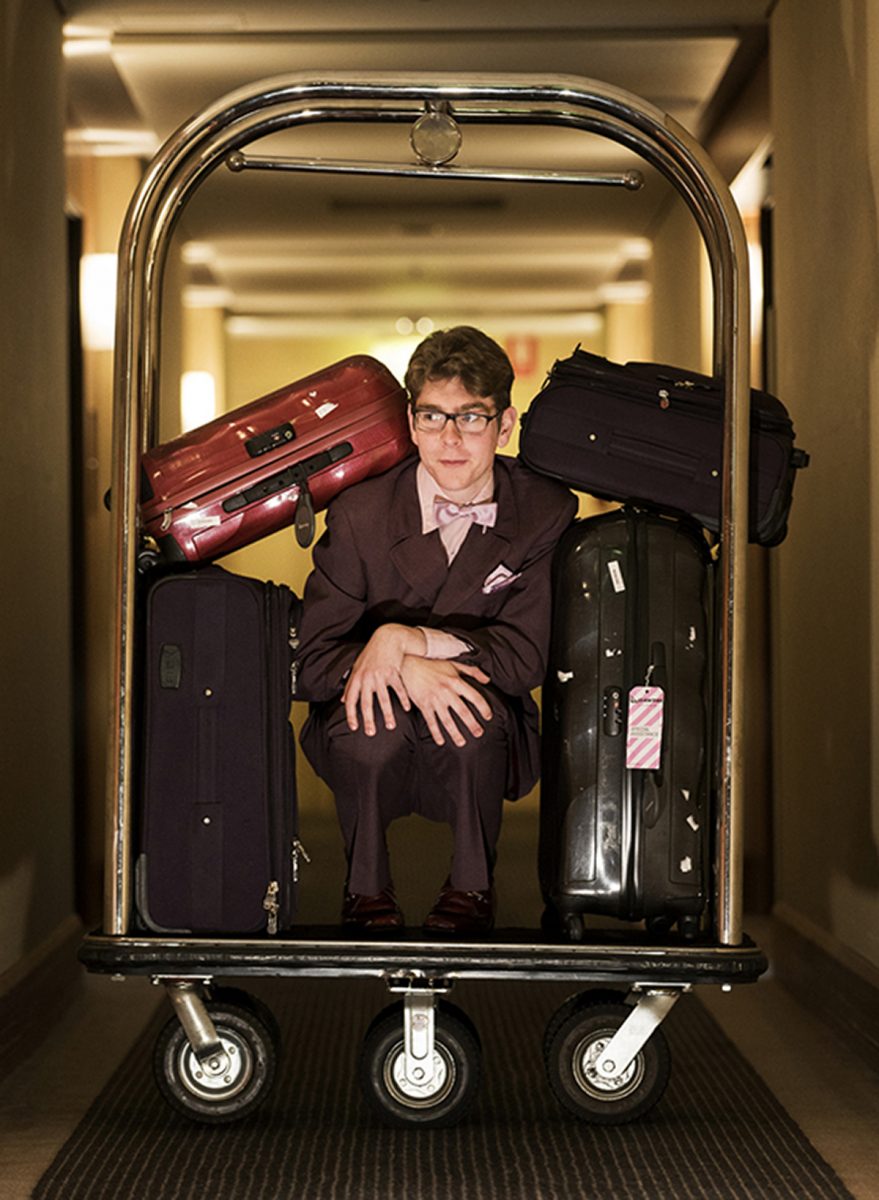
Michael Noble, Intimate Space, Restless Dance Theatre, Adelaide Festival 2017, Restless, photo Shane Reid
Under Neil Armfield and Rachel Healy, the Adelaide Festival’s co-Artistic Directors since 2017, new music has been deemphasised — Sefton’s Unsound programs, as my colleague Chris Reid noted in RT in July, having “extended contemporary music’s reach beyond its typical niche audience” — while disability theatre and dance, a perennially vibrant though traditionally under-regarded part of Adelaide’s arts ecology, has penetrated both the Adelaide Festival (Restless Dance Theatre, Intimate Space, RT137) and OzAsia (Tutti, Shedding Light and Beastly, RT134). Of the former, “a promenading, site-specific work that situates the company’s performers with disability in various quarters of the Hilton Hotel in Adelaide’s CBD”, I wrote: “…we are all subject to the gaze here, to a Lacanian anxiety that comes from looking, and being looked at. It is in this ‘play of light and opacity’ that Intimate Space revels…emphasis[ing] the significance of both locating bodies with disability in spaces that they are all too often absent from, and the powerful effect of the return of the gaze to its subject.”
It will be interesting to see what the remainder of Armfield and Healy’s record-breaking five-year tenure will bring (just announced as the centrepiece of 2019’s Festival is Barry Kosky and Suzanne Andrade’s Magic Flute). While I anticipate with diminishing enthusiasm a consolidation of the festival’s historically Eurocentric, shopping trolley programming model, works of redoubtable scale and vision by Pina Bausch (Nelken, RT131), Romeo Castellucci (Go Down, Moses, RT131), and Ivo Van Hove (Roman Tragedies, RT120), especially will nevertheless long remain emblazoned on my mind. Of the latter, I wrote that it, “…eschewed critique, paring back the poetry of Shakespeare’s Roman histories to plain, contemporary English (via Dutch) and rendering the plays with the urgent, pummelling aesthetic of the 24-hour news media. Audience members will recall for a long time performances, especially those by Gijs Scholten van Aschat, Frieda Pittoors and Hans Kesting, of a rare intensity — Shakespeare given back to us by way of nothing more alchemical than the actor’s craft in unencumbered motion” (RT Profiler 8).
This is to say nothing of the powerfully intimate (and sometimes implicating) solo works, Cristian Ceresoli and Silvia Gallerano’s La Merda (RT126) and Danny Braverman’s Wot? No Fish!! (RT137) among them, that left similarly enduring impressions. Despite a glut of variously confessional solo shows in recent years, such boldly imaginative works — along with UK performance artist Bryony Kimmings’ Fake It Till You Make It and Sex Idiot, which I wrote about for Daily Review — suggested the monologue form is far from exhausted. (Although, conversely, it has also been interesting in the same period to witness a ‘scaling up’ of Indigenous work from the influential one-person shows of the 1990s and early 2000s, chief among them Wesley Enoch and Deborah Mailman’s 7 Stages of Grieving, to works of considerable size and ambition like the Malthouse Theatre’s Shadow King, Enoch’s Black Diggers, and Deborah Cheetham’s Pecan Summer, which I also wrote about in the Daily Review).
OzAsia: festival of the cultural moment
More so than the Adelaide Festival, however, it is OzAsia, reinvigorated since 2015 under the artistic directorship of Joseph Mitchell, that has engaged with innovative live and media arts, “Mitchell’s adventurous programming,” as I wrote in RT July 18, “representing the formal and conceptual breadth of contemporary Asian performance.” Featuring work from Israel, the United States, and elsewhere, Mitchell’s programs have sought to reflect the increasing global influence of Asian art rather than simply offer a sort of lazy susan of geographically and culturally discrete works. Springing to mind are encounters memorably queer (Luke George and Daniel Kok, Bunny, SoftMachine: Rianto, RT135), immersive (Teater Garasi, The Streets, Toco Nikaido, Miss Revolutionary Idol Berserker, RT130), and communitarian (600 Highwaymen, The Record, RT October 2016) and Cry Jailolo, “Eko Supriyanto’s enthralling take on North Maluku tribal dance”).
Locating the contemporary in Asia, as opposed to the exotic in Australia, this is, as Keith Gallasch wrote in RT in June 2016, “the OzAsia Festival many of us have been waiting for, to see work we’ve only ever read about, glimpsed while travelling or, eager to learn, have never heard of, such is the paucity of contemporary Asian performance reaching Australia despite the dedication of a handful of producers.” This is changing — “more and more dance, theatre and cross-artform work from Asia is being programmed by Australian festivals and flagship companies, often off the back of seasons at OzAsia,” as I noted in RT in July — but perhaps not as quickly as we would wish.
In want of a rehumanising spell
If anything connects the works I have mentioned here — and it is a necessarily selective record, not even broad enough to encompass contemporary dance’s embrace of science and technology or the resurgence of performance art, two recent trends I have observed with fascination — then perhaps it is captured by British writer and critic Olivia Laing’s idea of the “rehumanising spell.” As the world’s collective heart hardens towards the displaced and the different, the single story will simply not do to foreground our humanity or our diversity — a buzzword now, yes, but no less powerful for it. In these times of austerity and “efficiency,” I fear a relapse into an enervating conservatism by our major performing arts companies, a failure to assimilate the quiet revolutions of form and feeling taking place all about the mainstream. In this respect, Adelaide may well prove the canary in the coalmine.
–
You can read about Ben Brooker here.
Top image credit: Kialea-Nadine Williams, Larissa McGowan, Mortal Condition, photo Daniel Purvis
Although the following represents hours of gonzo research, the names, dates and some concepts have been changed to protect the writer.
There’s a shop on Oxford Street, Paddington which sells party decorations. Its doorway is a popular hang-out for pink-faced men with paper bags.
On this particular day, the window display consists of pink elephants sliding back and forth in front of a sea of pink tinsel. The old man in the doorway is killing himself laughing. I assume he cannot believe it.
“They’re really there,” I tell him, trying to be helpful, imagining that swooping pink pachyderms might produce certain cognitive dissonances for the inebriated older person.
The man appears to look at me, but does not respond to my revelation. He continues to laugh, to rock to and fro, more or less in rhythm with the movement of the mechanised elephants, clutching a bottle of methylated spirits. Our relationship is of actor to audience: we can speak across this divide to each other but we cannot converse. I cannot figure out which is my role.
***
At a party, in the corner, a close friend is holding a half-bottle of red wine very close to his eyes. He is reading the label loudly. He tilts the bottle and some red wine spills onto the purple, green, red and blue striped rental carpet. “Enjoy wine to excess!” he yells. Another friend guffaws expansively. He is attempting to make a pun about rumours/roomers and how he is scotching those in his stomach. I am drunk enough to try anything (served to inmates in the closed bedroom). The music is 70s for some reason. A small number of shirtless men are dancing with their arms raised in ‘I-surrender-to-the-music’ poses, the floor having mysteriously cleared of the fully dressed.
I am explaining this gregariousness as ‘research.’ No one is too friendly or too snooty about this claim. It is as if the limits of the Theatre of Soak are constantly re-negotiating and no one wants to appear too surprised by new directions.
***
At another party, someone on the lounge suite is saying “thub, thub, thub.” A woman is explaining to me that her boyfriend is not a “testosteronic moron” despite his habit of flinging her and other people around the dance floor. I am suggesting alternative descriptions. Someone else is listening to our discussion, tilting her head from side to side instead of rotating it to face each speaker. She hasn’t yet said a word. I am conscious of playing to her, projecting my voice more than is conversationally necessitated. I am slurring and so is the woman with whom I am shpeaking. I try to shay things properly but I can’t.
“He’s just a prick,” I tell her. “Tell him to fuck off.” “He’sh OK,” she claimsh.
I hope that my voice sounds concerned, but I can hear it squeaking a little with righteousness. I am trying not to lean forward. Later, the boyfriend is gone and I feel vindicated. “Good on you,” I tell her. But I find him on the front steps wiping his eyes. I kind of remember saying to him, “Well, you stay away from her” and him saying, “You wouldn’t know.” Anyway, we don’t have a fight or anything so gauche. I walk back in and try to find a mixer. A computer science postgraduate is trying to make a spinach daiquiri. There are toothpicks installed all over the kitchen floor, stuck down with something clear and viscous.
I discover that people are anxious to share their own performances. It is a generous research area: I have had to make no promises of gift co-authorships.
“I was so drunk on Mescal I couldn’t throw up,” a friend tells me over dinner at the Old Saigon in Newtown. “The others left the room from time to time, but I stayed put.”
I think I probably respond to this description rather mean-spiritedly, kind of “aww, I dunno.” It’s seeming to me like more of an epiglottal non-performance. I get no sense of contraction and expansion, which means no characterisation. Inadequacy. Exclusion. Later, I realise I had misread the anecdote. My reading had lost the anecdote’s anecdoty. I had over-theorised my area of study, made its parameters too narrow. I had failed to picture the choreographic diagrams, the exits and entrances. The patterns of potential eye-contacts. Stillness as performance retains representational axes: conjuring a sense of liquidity in a dry setting (very Australian), the inner struggle. Anyway, I am not so discouraging that others at the table are dissuaded from describing their own endeavours.
“I was seeing a band and I was projectile vomiting. Someone took a photo,” says someone else. Now this was immediately Theatre in that it was valued in another medium.
“Do you have a copy?” I ask, “for the article,” but she didn’t. (Note the Theatre’s expressionist stream).
The restaurateur — a former foreign correspondent for Newsweek — is getting me to ask for our BYO in a growlier and more aggressive manner: “More beer.”
***
In another restaurant, I am waiting for a friend to return with wine. Because Sydney restaurant tables are too close together, a huge drunken man at the next table with his back to me is coming very close to upsetting the vase of plastic baby’s breath on my table. There are four people at this other table. They are telling short anecdotes which I cannot quite hear. After each anecdote, the person who has spoken laughs loudly and the others join in briefly and then drop off. Each of them has a distinctive laugh, which I imagine resembles a specific piece of light artillery. I quickly become irritated and am thinking of asking to change tables, despite the terrible snub this would be, when my friend returns. Suddenly I hardly notice the other table any more. Our chardonnay has a lifted passionfruit nose and a melon/citrus middle palate with a dry, clean finish.
–
Theatre of Soak: drunkenness as performance originally appeared in RealTime 4 page 3, December-January, 1994-95.
For more Bernard Cohen in RealTime, try Shifting Poetics: language and furniture removal, page 30, RT 6, April-May, 1995.
Bernard Cohen is Director of The Writing Workshop, which he founded in 2006. Previously, he taught creative writing at all educational levels from kindergarten to university, and to all ages from five to (approximately) 75. He has held writer’s residencies at Sir John Soane’s Museum and Peckham Library in London, as well as in Nottingham, Worcester, Taipei and Wagga Wagga. You can read Cohen’s amusing and insightful account of his 1999 Nottingham trAce residency and a widely shared ambition at that time for online writing here. He is the author of five novels including the 1996 Australian Vogel Prize winner The Blindman’s Hat and of The Antibiography of Robert F Menzies for which he received an Arts Council of England Writer’s Award and won the 2015 Russell Prize for Humour Writing (State Library NSW).
Top image credit: DV8, Enter Achilles, 1996, from the film adaptation of the 1995 dance work that Zsuzsanna Soboslay recalls from the 1996 Adelaide Festival in her reflection, in this edition, on writing for RealTime.
Being has teeth
To be touched by art is to be hurt — sometimes bitten, buffeted, brought to the edge of the cliff of how we know ourselves. Born again, or for a first time, wishing for less, wishing for more.…
In 25 years of writing for Real Time, I have reviewed shows about bees, bastards and fires (Nikki Heywood’s Creatures Ourselves [RT6, page 6], 1995; Raoul Craemer in Pigman’s Lament haunted by his fascist grandfather’s ghost, 2016; and a 2003 dance work, Constructed Realities (RT 53) about “our brittle landscape” upstaged by real-life bushfires:
“To see, to have seen a performance in such circumstances… puts pressure on a work’s tone and meaning; but perhaps all theatre events, to be deeply of relevance and value, need to match and meet this pressure…In life, we are already asked to see more than enough.”
At times, we are led like hopeful brides to the altar of special events, but find instead “gaudy spectacles, shuffled performances, screeching microphones (in) nostalgic serenades for the ethnic hordes” (Canberra Multicultural Festival, 2007), or quasi-participatory journeys into psychic ‘undergrounds’ (“now everybody dance, everybody sing,” Real Time@London International Festival of Theatre, 1997).
At times, the “endurance of seeing too little is sometimes as difficult as viewing too much” (RT 53 again). On the other hand, I have had moments where a performance encounter “reminds me that every act of seeing/listening can remake the world”: where music group Jouissance’s proto-Byzantine prayer “breaks, dives and flutters” in “an almost archaeologic examination of the breadth and depth” of human soul (RT97); or where the “huge beauties” of Jiri Kylian’s Bella Figura and La Petite Mort reveal “trouble thrumming along skirt-swept courtyards” and rapiers drawn “like floss through teeth” in a “delicate hunt of ordered passion” — a piece on Renaissance court intrigues (Melbourne International Arts Festival MIFA 1996).
These are voices, organs, bodies, doing vital things in the world. Performance sits at the very edge of our face-to-face encounters, where the ethics of our actions — and our looking — come under heightened scrutiny. Spectatorship engages all our viscera: if I sit in proximity to someone’s body I can hear their organs chugging, their lungs respiring, veins, bubbling, stomach twisting, skin composing, decomposing, all in different rhythms, and at the same time.
Seeing impels me to feel, feeling impels me to speak — and to hope that art respects my seeing. I try to look both ways — as a maker, at the possibilities of a circumstance; as a seer, at what enables (or disables) visions to be realised.
Festivalities
There’s an intensity to festivals — surviving the trek to Adelaide Festival 2000 “after a night in Motel Hitchcock — Baygon and brick, my restless child turning circles into sharp walls” — or making it to London in 1997 with RealTime at the London International Festival of Theatre (LIFT), and living for 5, 7, 28 days in an arts avalanche. At LIFT, troubled currents stirred the silt of the Thames, in cultural essays from the colonies (7 Stages of Grieving; the Geography of Haunted Places), and an account of the collective amnesia of a nation (Germany after 1945) trying to bury and clean-slate its history in a “zero hour” — Berliner Schauspielhaus’ Stunde Null). A huge block of ice slow-dripping grief, a chimpanzee “advisor” and a chorus of grown men in pyjamas crooning folk hymns play the nexus between sleeping, wakening and complacency. We are made by all the waters we swim in, read about and see on stage.
Praise me for my looking
I had readers offended that I took issue with Lloyd Newson’s Enter Achilles (Adelaide Festival 1996). The work, about the “labyrinth of male rituals” is set in a pub:
“…the ideal location for head (butting), ear (holding), shoulder (shoving), chest (puffing), bellies (sleeking), thighs (crunching, mocking, smooching), knees (jiving), ankles (flicking), soles (crushing). It is a piece full of vomit, brawn, competitiveness, the demeaning of women, hyperbolic Superman fantasies — and just plain showing off…
“The dancers execute everything so well, from punch-ups to push-ups, from piss-ups and pissing in pints to a red-hot rope act and fucking an orgasm-painted plastic doll until the doll is slaughtered and the men shed crocodile tears.
“These guys are heroes with great arses (and) the audience loves it. Just like life, they say, when the final’s over, and they begin their response replays. We have to watch from the sides of the football field, and cheer on.”
In the current #MeToo context, this conversation is now, and always.
Similarly — and pre-empting the Royal Commission into the Institutional Abuse of Children — what plays in the shadows of Alain Patel’s lets op Bach (Adelaide Festival 2000) carries eternal significance:
“Tumbling, juggling: there’s a toddler — a real 0ne (as in a family circus) — tricycling the stage amidst roastings, lechery, lynchings, wildfire. Her constancy touches me as I touch soil under crisis: her ribboned presence a continuo beneath the carryings-on. I weep, often, wet and long, throughout this work: when the man leers at the fully-dressed pubescent dancing amongst half-naked women, as if she, what is beneath this pointed, long-sleeved she, is an easy hamburger for the taking.
“This raucous, bloodied work makes me glad to be alive to see this mirror back on myself. I recognise: where I fear life, what contradictions, imperfections I don’t like to see. They’re up there dancing, baby. Sometimes from such places of grief we can come to looking.”
Bodies, coping, crying, wounding, wounded. I ask, “Do I write better whilst lactating?” Does it make a difference that I am in the zone of breastfeeding over this year’s viewing? At MAP in 1998 in Melbourne, “I go weak at the knees without my baby daughter in the room.” Is compassion only dictated by circumstance?
In our current, ‘post-truth’ moment, raw and prophetic reflections on the fluidity of meaning in a world-without-foothold really matters.
“Shatter acid: Men magically slide up walls with desire, tubas leap through a window. A rake grows from watering (but love does not). A tuba examines a dead body which begins to sing. Does it matter to be alive? Does it matter than I ever had a soul?
“This is music-theatre, dance-theatre, theatre-theatre, where boundaries and borders truth and lies become the same dance, where reasoning is so mad that a meal becomes a murder…” (Claustrophobia, Maly Theatre of St Petersburg, Adelaide Festival, 1996).
Many able bodies dancing
My attention turns more and more to worrying about what is excluded from arts practices. I recognise now how work, such as a dance I reviewed in 1997, influences the future I will move into. In a piece, choreographed by Siobhan Davies for the mixed-ability company, CandoCo:
“David Toole uses his elbows like knees, his arms like levering cranes, his tumbles and turns somehow turning the earth like an earth-moving machine. Most of the fully-able-bodied dancers feel static beside him.”
And while “wheelchair-bound Jon French’s angularity was given wonderful space,” his qualities “could have been better threaded and echoed… throughout the piece.” I note that “working against isolation and exclusion” includes bringing different abilities into a shared vision.
Similarly, Entelechy, a company based in south-east London whom I first met at LIFT, includes people of multiple and severe disabilities and also works with people with dementia or Alzheimer’s disease.
“Their process creates a nexus between movement, music and sensory-based experience: ‘She likes soft cakes, not biscuits, rice on hands, African spices, the sound of water pouring.’ Their outcomes make apparent the moving beauty of thoughts and ideas at work beneath the skin. It makes you think how often our ideas of ‘dance’ come pre-fixed, limiting what we see, how we see it, and what we choose to show.”
The genre of youth dance, too, can be straitjacketed by the limited perceptions of its own audience, as evidenced in repeated criticism of Quantum Leap ensemble’s Canberra Playhouse seasons. Select Option — a vibrant, inventive, often stunning show — was berated for failing to display any ‘real’ choreographic pizzazz, collaboration or participant autonomy: “It was evident that the young performers did their very best to keep the grown-ups happy…doing what they were told to do and saying what is expected of them to say” (Arts Hub, July 31, 2013). I responded:
“The criticism is curious, as all QL projects — and especially this one — incorporate a considerable degree of…collaboration in terms of research, subject matter and choreography.”
I wonder at the level of narcissism in any audience. Does the performer ‘move me,’ or ‘move for me’? And is that all we’re there for?
“It probably takes a lifetime to understand our own sense of agency and relative freedoms. I think we can make a better attempt to appreciate what is there, not just what we expect to see, and try and examine more deeply the cultural imprimaturs we unconsciously bring with us every time we enter the theatre.”
Weapons of minute destruction
Urban Theatre Projects Catalogue of Dreams (2013) was a delicate show about bureaucracies, and children in custody and foster care. We move from a finely crafted scene of missed understandings, from “…the dinner-table scrape of cutlery, cutting, slicing, measuring all the unspeakable, the gaps in experience between the order and routine of ‘normal’ lives and the disorder that must have thrown a child into this circumstance” to the incredibly moving image of the social worker — a huge man trying to cast a very small shadow, sitting on the floor beside the troubled boy. This work — performed in a doughnut-shaped stage lined with lever arch files — managed to combine intergenerational and cross-cultural issues in a humane construct with sharp political edge. I’ve not often seen as delicate a representation of traumatised silence.
Other silenced voices now speaking
As late as 2017, ANU convened a special conference to address the global paucity of opportunities for performances of work by female composers (Composing Women, 2017). This event was prefigured by the National Festival of Women’s Music in 2001 and a special concert, After Julia (2014), centred on the Prime Ministership of Julia Gillard and the discrimination to which she was subjected. Cat Hope—formerly director of the group Decibel, now head of Music at Monash, “…offered seven composers the opportunity to ‘give voice’ to their responses to this aspect of [Gillard’s] term in office. Parallels and interplay between visible and invisible, spoken and unspoken or muted forces at play, both politically and musically, were appropriately matched.
“Cathy Milliken’s piece, through its textural contrasts — rattles, rolls, chips and gliss that thicken and thin — insinuates a ‘court of intrigue,’ while Kate Moore’s Oil Drums, in cross-rhythms between piano and violin, “suggested tribal antagonisms, battles in vast desert, shattered horizons. I’ve never heard a high ostinato before but the keyboards play it, high-flying sand blinding the air.
“Her ‘contemporary Apocalypse Now’ plays in contradistinction to Andrée Greenwell’s melodic sprechgesang for six teenage voices: Gillard’s Prime Ministerial acceptance speech peppered with invectives, delivered from ‘the mouths of babes.’ How conscious or unconscious is misogyny?”
These are women grappling with the forces that drive politics, seeing and listening. Can we please have Milliken or Moore — or for that matter, Liza Lim — engaged as composer laureate to the Australian people?
Learning in other climes — from the LIFT experience
Forever, I am grateful to RealTime for taking me to London in 1997, to both experience and write about LIFT in a city that felt and still feels comfortable talking about art.
I learnt diplomacy from Keith Gallasch’s response to a backhanded swipe from a London team member, who found it easier to criticise colonial ‘plebs’ than to countenance multiple perspectives and experiences. Keith’s response emphasised the difference between diatribe (a kind of rubbing out) and dialogue (a conversation on equal footing).
The progeny of my time there carved out a future I had not yet imagined: devotion to CACD work and equity of access for people from many backgrounds and of many abilities.
It was a full 18 years before I could revisit London, those artists and places. The broad vision afforded me by writing for, and travelling with, RealTime, has allowed me to sharpen the ethics of my seeing and intention.
Endnote: archives.
An archive talks forwards and backwards through time. It prompts memories and highlights discrepancies of recall; but as Baxter and Gallasch have always insisted: keep describing the moment. What is happening before your eyes and in your ears?
To return to the archive is to rediscover and again be surprised.
I write, to (re)discover and be changed.
I write, haunted by giants.
–
Read about Zsuzsanna Soboslay here.
Top image credit: Raoul Craemer, Pigman’s Lament, photo Shelley Higgs


